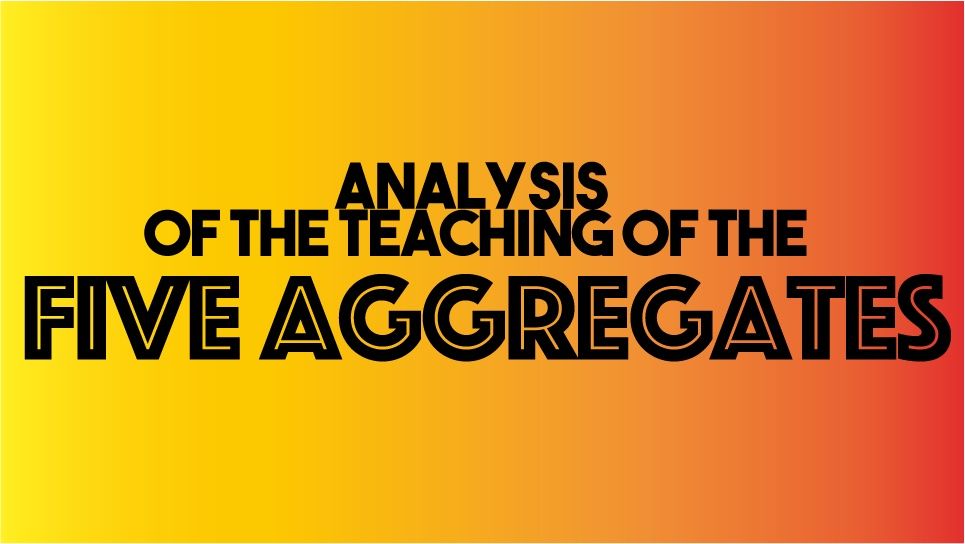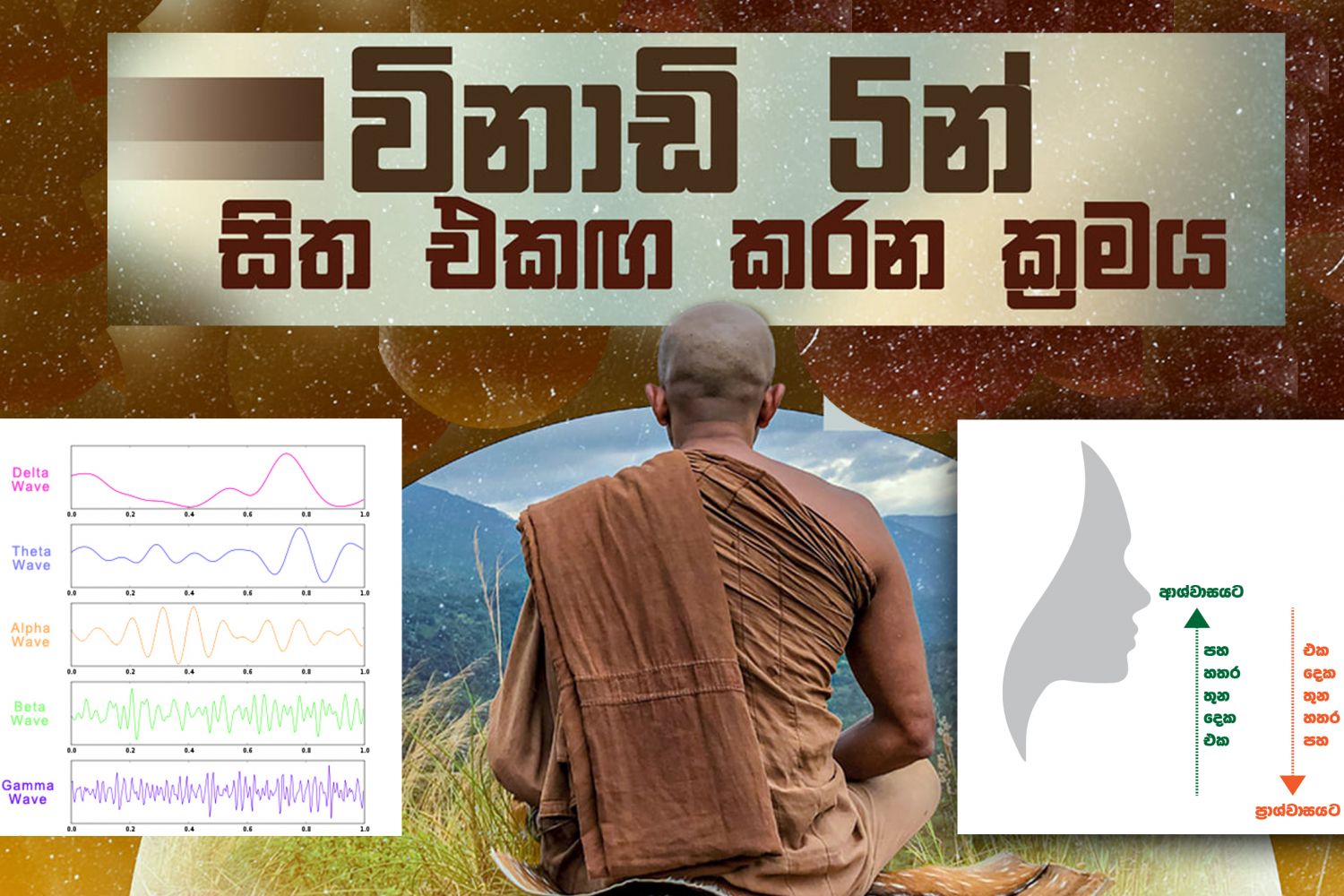
Analysis of the teaching of the Five Aggregates
TERMS OF REFERENCE
A brief introduction on the Buddhist doctrine and defining the meaning of “khanda” as per the texts.
Analysing the intention/concept of describing the “Five Aggregates” in the Buddhist doctrine.
Analysing the functions of the “Five Aggregates” concerning the whole creation of the world. – construction of aggregates- construction of a self
– construction of an external
– construction of a sensation
Analysing the manipulation of the “Five Aggregates” concerning the Nibbana. – manipulation through three characteristics
– manipulation through ten perceptions described in “girimananda sutta”.
Conclusion
INTRODUCTION
The Buddhist philosophy emerged as a solution when people were identifying the problem of suffering such as death, illness and ageing. the enlightenment is nothing but the knowledge of the entire creation and that maturity of everything is led to the end of suffering. To achieve the supreme knowledge of the entire creation of the world, the Buddhist philosophy creates a tool that helps to study the true mechanism of the world. It is referred to as “khanda” in Pāli language, in this article, it is referred to as “Five Aggregates”.The word “khanda” referred to as bundles or piles of form, feeling, perception, fabrications, and consciousness that functioning in an array to create one unique result called “clinging- khanda” (Pancha-uphādhānakhanda). The functions of “clinging-khanda” described the creation of the world that will lead to the suffering and the manipulation or deconstruction of five aggregates lead to the end of suffering.
FUNCTIONS OF THE FIVE AGGREGATES
Five Aggregates are derived from 7 universal mental factors (sabbacitta-sadharana-caitisika) described in Abhidhamma texts. They are the skeleton of creation of the world, functioning with their 52 unique characteristics and 7 are common to any creation, and for easy analysis, 5 characteristics are taken out to explore as “Five Aggregates” in terms of their functions. [Figure 1.0]
Five Aggregates are functioning as per the Links of Dependent Origination (Patichcha Samuppadaya). For example; causes and effects of one Aggregate will lead to the functioning of the next aggregate. This process will lead to the continuation of the life cycle. Continuation of the processes will lead to making things permanent, permanency caused to the creation of individuality, both above factors will create a feeling of aspiration and desires. Desires are always converted to endless suffering. [Reference: Dammachakka sutta]
PROCESSES OF FIVE AGGREGATES
Mainly there are two processes that can be identified. that can be named as vertical process and the horizontal process.
The vertical process has described the initial development of Five Aggregates and the looping function of the same.
The horizontal process has described the expansion of Five Aggregates within the fourth Aggregate called “fabrications” (sankāra). Further, it is described the diversity and the complexity of the world that has been created through Five Aggregates. [reference: khajjanēya sutta, pārileyyaka sutta, punnama sutta]
The vertical process
The causes and effects of initial development of Five Aggregates consists of five great existents called “Dhāthu” and unsatisfied desires that come from the previous loops of five aggregates called “Kamma-viññāṇa”.
Initial foaming of great existents (Dhāthu) and unsatisfied desires (Kamma-viññāṇa), is described as the 1st stage of the Five Aggregate called Form (rupa-khanda). the forming function will create a basic form of colour, sound, smell, taste, sensations such as temperature and pressure. the basic form of these above elements can be identified as energy forms.
These energy forms are then converted to the feeling stage described as the 2nd stage of the Five Aggregates. the Feeling (vedanā-khanda) referred to the very fine and tenuous feeling of the energy forms that have been formed previously.
The fine and tenuous feeling then develop to make a sense or perception by relating the present feeling with the past unsatisfied desires/experiences. This is the 3rd stage of Five Aggregates called Perception (sañña-khanda).
The fourth stage of the process has highlighted more in the Pali texts and it described how the world is projecting or fabricating through this process called Fabrication (saṅkhāra-khanda). This projection/fabrication is divided into three steps called; the sight (Ditti), the measurement (Māna) and the desire (Tanhā)
The sight (Ditti) can be described as the process of projection/ fabrication through colour, sound, smell, taste, sensation such as temperature and pressure. this projection will lead to create three- dimensional space and the individuality.
The comparison between the individuality and the outer projected space called the measurement (Māna). These measurements determine the time as past, present and future, the distances, roughness and smoothness etc.,
The result of the measurement will create the desires/lust. More the processes of measurement and the sight, proportionally the desire (Tanhā) will increase accordingly.
The result of these three steps of processes (Ditti), (Māna) and (Tanhā) can be defined as the creation of the whole world.
Even though these processes are described in detailed the actual speed of these processes are instantly fugitive (khana) or called as impermanence (anicca). This impermanency affected to the instability of what it’s fabricated or projected too. For example; the projection that developed at this point such as individuality, the outer physical space and the desires that developed through the measurements (can be defined as the whole world) will be vanished off with the timeless changed that has affected to this processes.
This dissolution will lead to creating the unsatisfied desires (Kamma) and that will be animated towards fabricating/projecting the world again, this process is known as the Consciousness (viññāṇa-khanda), the fifth stage of Five Aggregates.
The horizontal process
As described in the fourth stage, the Fabrication process is the most important section because the presence of the physical world is appeared here.
The physical world is consists of the individuality and outer space with whole objects and the sensations that feel within it. The world that fabricated/projected has many complexities and it is more diversified with emotions and feelings with pleasant, painful or neutral ranges.
To understand the concept of being a complex or diversified world, sub-processes of the Five Aggregates have described in the Pali contexts.
the forming (rupa-khanda) will be the contacting of sights, sound, smell, taste, touches and memories with the physical sensors.
The feeling (vedanā-khanda) refers to the pleasant, unpleasant and neutral (neither pleasant nor unpleasant) sensations that occur when our internal sense organs come into contact with external sense objects and the associated consciousness.
The perception (sañña-khanda) can be defined as grasping at the distinguishing features or characteristics. It is also said that sañña registers whether an object is recognised or not.
The fabrication (saṅkhāra-khanda) has been described as all types of mental habits, thoughts, ideas, opinions, prejudices, compulsions, and decisions triggered by an object.
The Consciousness (viññāṇa-khanda) refers to the drives that bring desires repeatedly.
By analysing both the processes, vertical process of Five Aggregates will lead to creating the individuality, the external and its desires. The horizontal process of Five Aggregates will expand the same to the endless possibilities of sensation and it will incorrectly confirm the world is truly existing which will lead to the endless suffering. [Figure 2.0]
MANIPULATION OF THE “FIVE AGGREGATES” IN RESPECT TO THE NIBBANA.
Manipulation through three characteristics such as Anicca (not stable), Dukkha (suffering) and Anatt(Not a self).
When studying the concept of Five Aggregates, it is understood five aggregates are instantly changing their positions from one to another, this instability called the “anicca”. if the process is impermanent the result which gains through this also be impermanence.
Because of the characteristics of impermanency, un-satisfaction is always their in the process of Five Aggregates, that we called the Dukkha (suffering)
If the result is not controllable due to impermanency, how would be the individuality existed?
Manipulation through ten perceptions described in “Girimananda sutta”
In the perception process of Five Aggregates, always present feeling will be compared with the past experiences/ past unsatisfied desires. All these experiences are rooted with an individuality, permanency and expecting a feeling of pleasure.
The concept of Girimananda Sutta is that to change the comparison to ten new perceptions described in the Sutta instead of the normal pattern. For example, if the present feeling compared with the conception of perception of inconstancy, it will lead to breaking the normal flow of the process of Five Aggregates.
Likewise, there are ten Perceptions as follows to filtered along with the 3rd stage of the process called Perception, in order to deconstruct the processes of Five Aggregates.
Perception of inconstancy, perception of not-self, perception of unattractiveness, perception of drawbacks, perception of abandoning, perception of dispassion, perception of cessation, perception of distaste for every world, perception of the undesirability of all fabrications and the mindfulness of in-&-out breathing. The tenth perception is nothing but the practical way of doing the filtration of all above.
CONCLUSION
Considering all the above analysis according to the Pali texts, it is well understood that the Five Aggregates are the main conceptual tool to understand processes of creation of the world and also to destruct the whole process that caused suffering.
Author:Ven.Homagama Rewatha Thero










